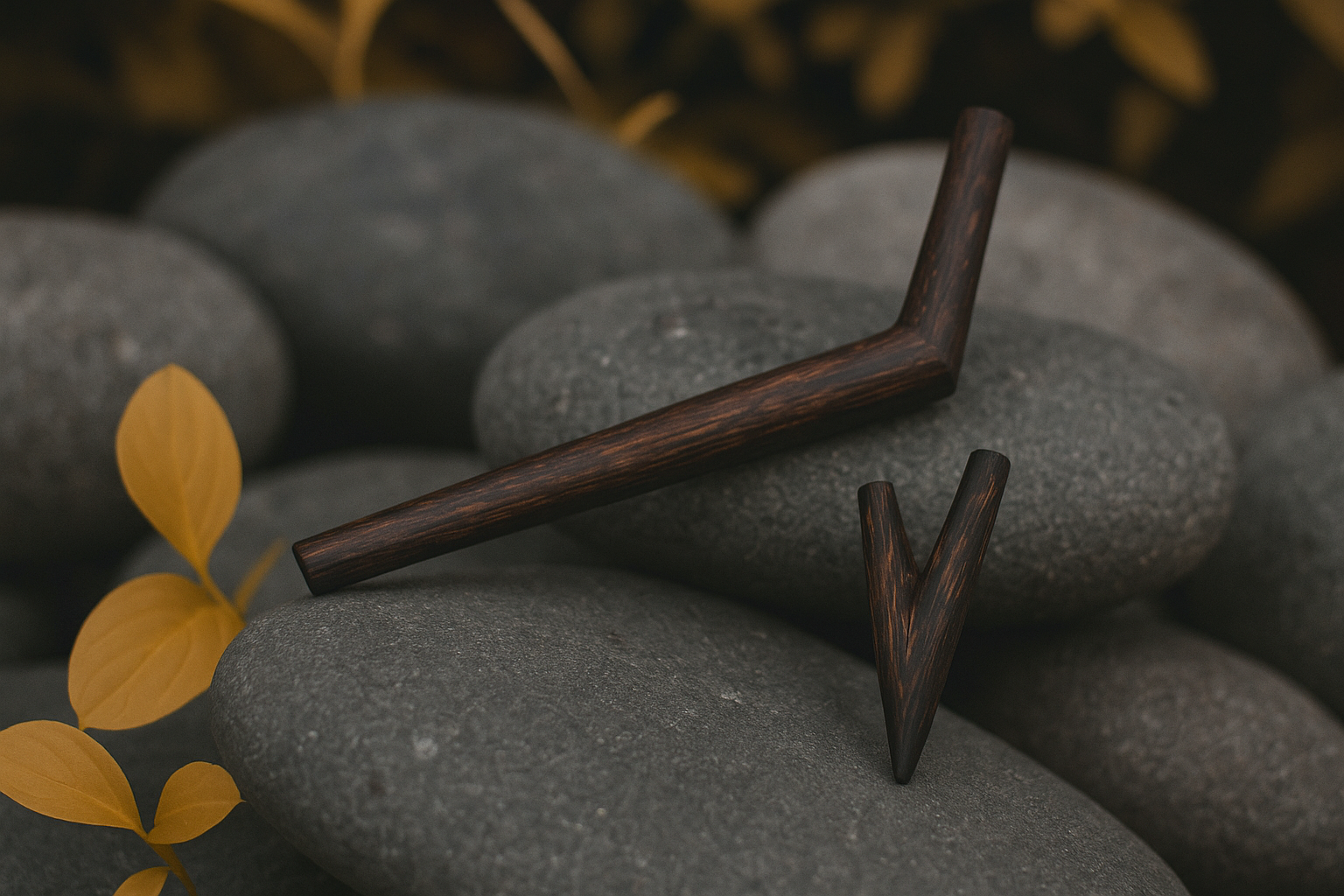
Tepi and Kuripé: What’s the Difference Between These Sacred Rapé Pipes?
The ceremonial use of sacred rapé pipes has grown significantly within spiritual communities across the U.S. and Europe. There are two main types of pipes: tepi and kuripé.
Although both serve the same purpose, they are designed for very different situations.
Understanding the difference between them is essential for anyone who wishes to approach these ancient Amazonian traditions with respect and awareness.
What Is a Tepi Pipe?
The tepi is a traditional tool used for the ceremonial application of rapé from one person to another. It is usually a long, V-shaped pipe, ranging from 12 to 20 inches (30–50 cm) in length.
Tepis are always made from natural materials such as bamboo, wood, or bone.
The entire purpose of the tepi is connection and service: one end is placed in the receiver’s nostril while the practitioner gently blows the medicine through the other end.
This makes the tepi a tool of community, exchange, and shared experience.
What Is a Kuripé?
The kuripé was designed for self-application of rapé.
This shorter, V-shaped pipe allows you to serve yourself. One end is placed into the nostril, while the other end, shaped to fit the mouth, is used to blow.
It is a highly personal tool, often carried by practitioners for daily rituals, meditation, or grounding before ceremonies. Its compact size and independence from a helper make the kuripé the most common type of rapé pipe for individual use, both at home and on the go.
Key Differences Between Tepi and Kuripé
Application. The tepi is for serving others (interpersonal use). The kuripé is for serving yourself (individual use).
Size and Design. The tepi is long to create space between people. The kuripé is short and compact for portability.
Context. The tepi is primarily used in group ceremonies. The kuripé is meant for personal, everyday practice.
Understanding these distinctions ensures that you use the right tool for the right context — and approach the ritual with proper respect.
How to Choose a Pipe for Rapé Practice
For Group Ceremonies
If you’re learning in a group with a guide, you’ll most likely be introduced to rapé through a tepi. Beginners don’t necessarily need to purchase one right away.
For Personal Practice
For most newcomers, the kuripé is the ideal choice. It allows for self-practice while still maintaining the integrity of the ritual.
For the Enthusiast
Many practitioners eventually acquire both a tepi and a kuripé, so they are equipped for any setting — whether sharing with a partner, participating in a group, or conducting their own rituals.
Where to Buy Authentic Tepi and Kuripé Pipes
It’s important to buy from trusted makers — artisans who create more than just a product for profit, but a true piece of art and a tool of power.
Good sources to consider:
Online shops specializing in ethnobotanical tools.
Sellers who are transparent about the origins of their materials.
Makers who explain the cultural meaning behind their creations.
And of course, there is Ayaho Care.
Here, you’ll find hand-carved tepi and kuripé pipes made from rosewood, stone, ayahuasca vine, black onyx, and more. With us, you’re not just buying a product — you’re acquiring a genuine ceremonial tool.
With over 7 years of experience, we’ve refined our craftsmanship, eliminated flaws, and established ourselves as a world leader in rapé instruments.
Always remember to cleanse and treat your new pipe with care before using it.
Haux Haux.









Laisser un commentaire